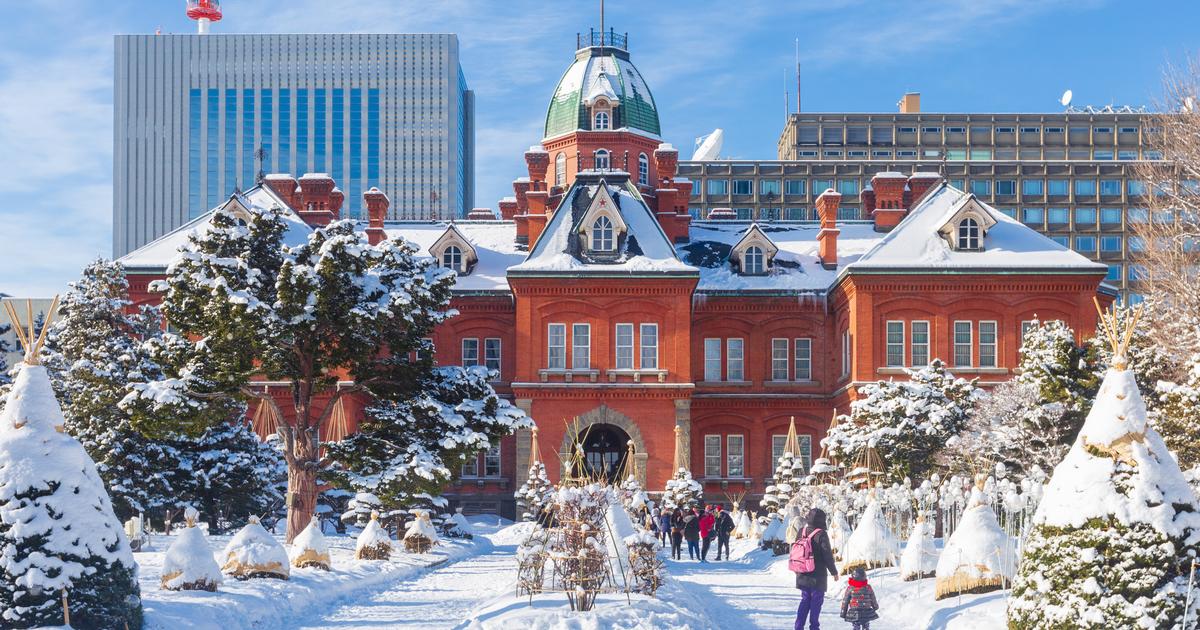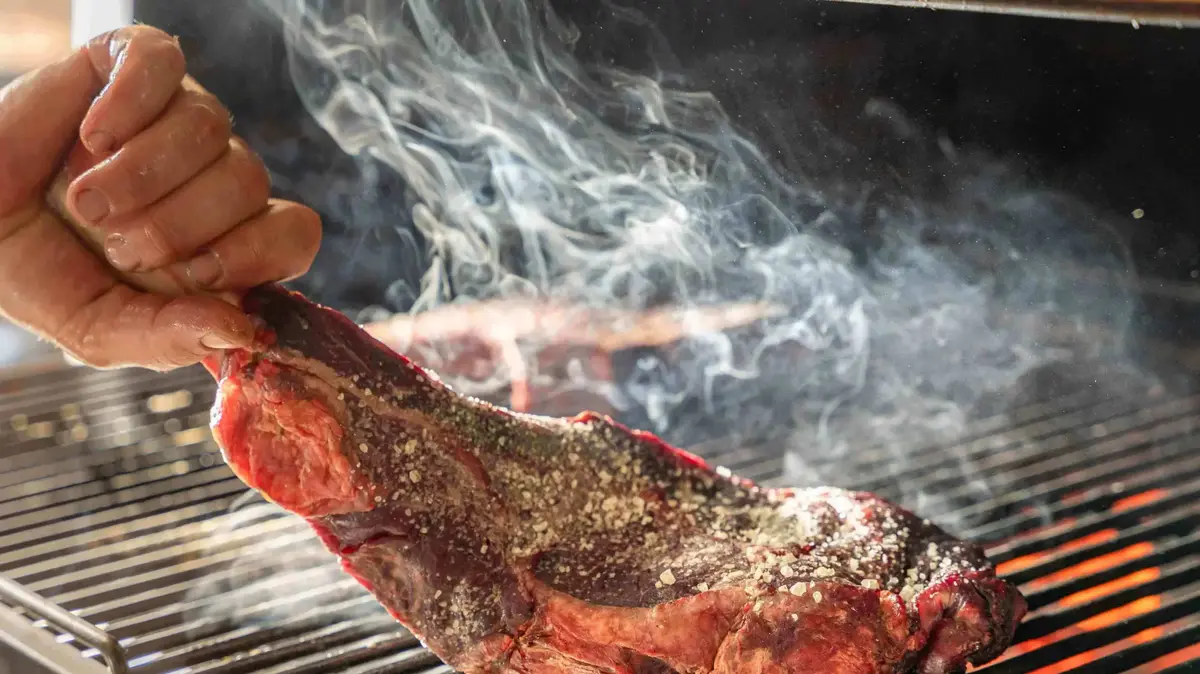In winter, Sapporo is a city of ice and snow - it hosted the Winter Olympics in 1972 - where its inhabitants warm themselves with a bowl of
ramen
paired with local beer.
Its streets are as cold as its coordinates are remote.
It is located on the island of Hokkaido, the northernmost of the Japanese archipelago.
It is a squared city in which it is very easy to orient oneself and more difficult to understand anything that happens in it.
Sapporo is structured around the elongated Odori Park, a mile-long green strip that divides the city in two.
At the west end is the old building of the
High Court
, today converted into a museum of law and justice, and at the east end,
the Television Tower (1)
, where there is a viewpoint that offers fantastic views of this metropolis that has made the cold the excuse to visit it.
To the north of Sapporo is the train station, and to the south,
Nakajima Park
.
Outside the urban limits awaits
Moerenuma Park
, a kind of scale synopsis of what Japan is.
A place that combines nature and architectural designs that harmonize with the environment.
9.00 Fresh fish to start
Very close to the canal that collects water from the Toyohira River, the
Nijo fish market
awaits
(2)
.
In the different stalls, in addition to selling all kinds of fish and creatures from the bottom of the sea, the shop assistants prepare pieces that are grilled or heated with a torch to eat standing up and at the moment, while one tries to warm up.
Another option is to go to the restaurants in the market itself and have a tea for breakfast accompanied by fish.
Daruma-ken,
which is closed at that time, is the
oldest
ramen
restaurant
in the city.
Since 1947 it opens at noon and closes when it runs out of gender.
A good excuse to return to Nijo once the activity slows down.
enlarge photo The Sapporo Brewery, founded at the end of the 19th century, is today a museum that traces the history of the brand through, for example, advertising posters.
In the photo, a design from 1920 to 1940. alamy
12.00 The beer that shines
Although
ramen
is the star dish in town, the biggest is the red pole star stamped on the bottle of their local beer, Sapporo.
It is the oldest in Japan.
It was founded in 1876 by Seibei Nakagawa, a young Japanese man who learned how to make it in Germany.
Upon his return, he opened a red brick brewery that today is
the Beer Museum (3)
.
In addition to the visit of rigor, in which the history and process of preparing hops explained, you can enjoy local and gardens annexes to a accompanied beer of the
same sausage that if you were in a
Biergarten
German.
This smooth lager-
style
beer
pairs
well with
ramen
because it doesn't overshadow the flavor of the broth, as well as refreshing, cleansing and soothing the palate between sips of the hot noodles.
15.00 A walk under cover
enlarge photo The Tanukikoji shopping arcade, in the Japanese city of Sapporo.
CHON KIT LEONG alamy
The
Tanukikoji shopping arcade (4)
is a long east-west corridor
lined with
shops and restaurants.
It is in the popular Susukino neighborhood, the liveliest in the city.
These types of galleries are very common in Japanese cities and are more practical than beautiful, if we compare them with those of Milan, Brussels or other European cities.
Tanukikoji is usually very busy and the noise comes from the commercials of each business, who through megaphones tell about the benefits of the products they sell.
The visit can be completed with a stop to regain strength and try one of the many snacks on offer, or hop on the tram that runs through Susukino, a relaxed and attractive means of transport from which to see how the urban hustle increases as you the day progresses.
17.00 The
ramen
alley
Without leaving the populous and central Susukino neighborhood, we arrive at the so-called
ramen
alley
(5)
.
The illuminated sign announcing it is almost larger than the alley itself:
Sapporo Ramen Yokocho
is read in large letters.
It is a corridor less than 2 meters wide and less than 30 meters long, occupied by a handful of
ramen
restaurants
since the mid-20th century.
The gallery, which runs between two buildings and connects two streets, has no roof, but is covered by a dense network of pipes, cables, electrical appliances and lanterns that barely let rain and snow pass.
Therefore, you can come to this alley to eat
miso ramen
(the specialty) in places like
Shimijimi
or
Kuni Mitsu,
and also to shelter from the cold.
enlarge photo A bowl of 'miso ramen'.
getty images
The call effect of the steaming bowl of noodles causes queues at the entrances of restaurants.
Sliding doors, blinds at head height and wooden bars.
Small spaces to enjoy in solitude, sandwiches among strangers and where you eat in front of the cook.
Sipping on them is the right thing to do and there is no trace of vulgarity in it.
MORE INFORMATION
Good omens in Kyoto
Tradition and manga in a superkabuki afternoon in Tokyo
19.00 Illuminated ice
In early February
the Sapporo Snow Festival
is celebrated
.
The event usually lasts several days during which its three main locations -
Susukino (6)
, the surroundings of the
Tsu Dome (7)
and
Odori Park (8)
- are filled with voluminous sculptures made of ice and snow.
At night they are illuminated and on them images are projected to the sound of music.
At the same time, ice skating rinks are also set up and exhibitions and competitions are held for skiing and snowboarding.
Food is never lacking;
Throughout the entire route, there are stalls selling various dishes, among which the crab stew and the classic
miso ramen stand out.
Snacks that make the night a little less cold.
Although the current 2021 edition has been canceled due to covid-19, the organization has launched an
online
version
until February 28 in which users can share their photographic memories of past editions and two audiovisual reports will be screened: one dedicated to the process of making traditional ice sculptures and a historical retrospective of the festival, which had been held continuously - until today - since 1950.
Find inspiration for your next trips on our Facebook and Twitter and Instagram or subscribe here to the El Viajero Newsletter.













